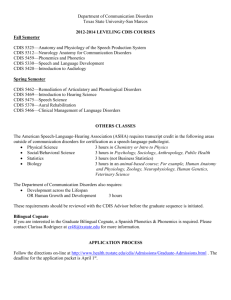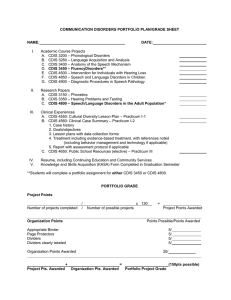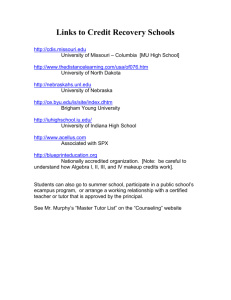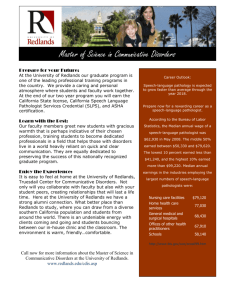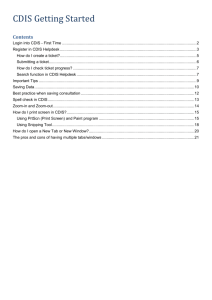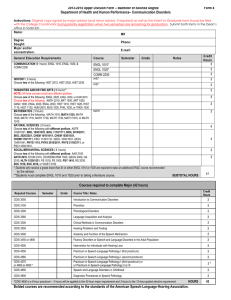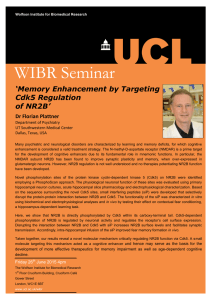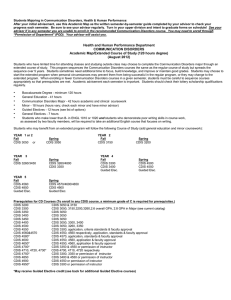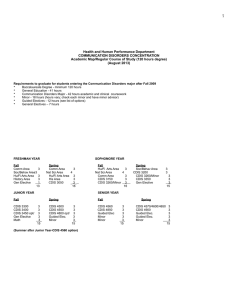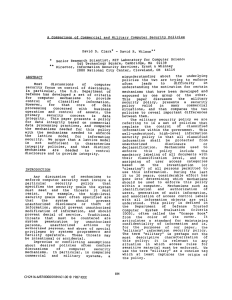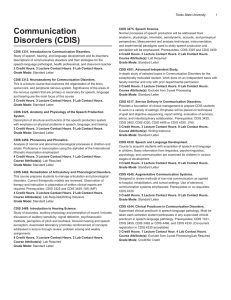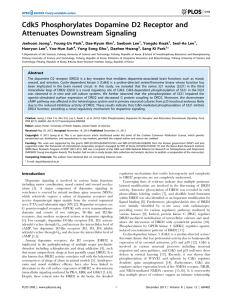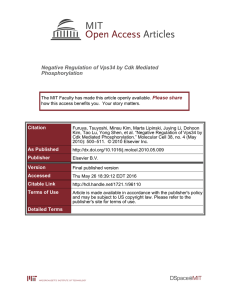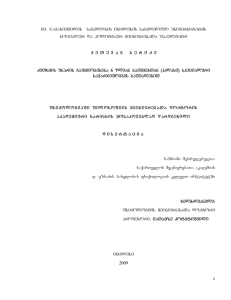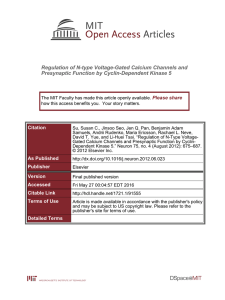•
advertisement
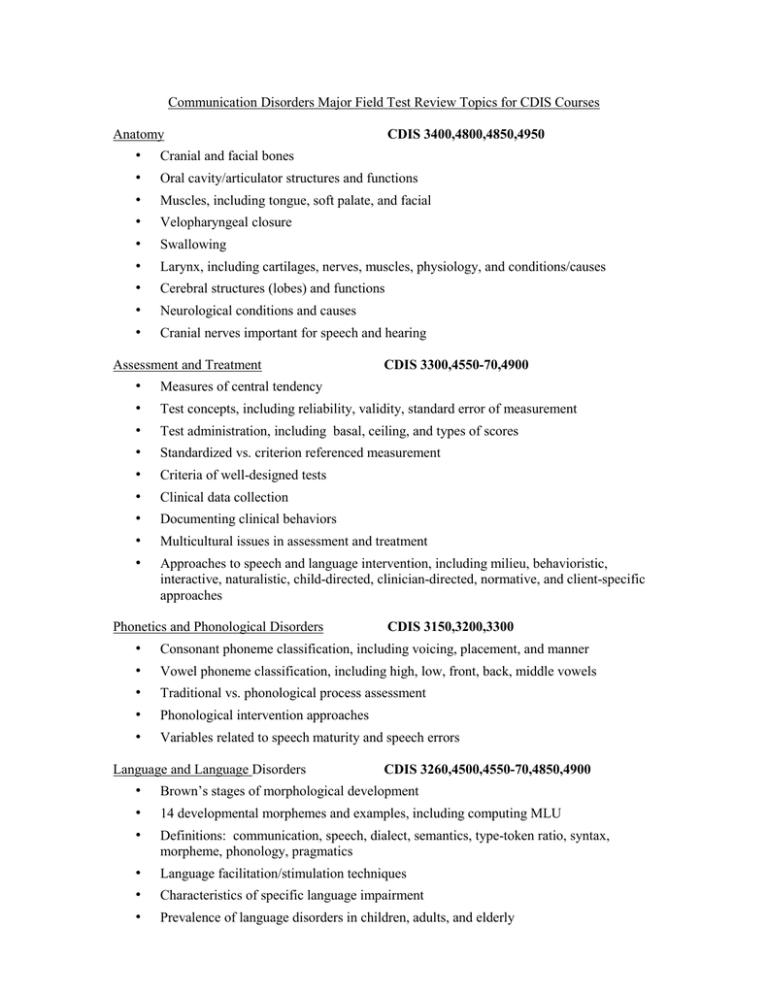
Communication Disorders Major Field Test Review Topics for CDIS Courses CDIS 3400,4800,4850,4950 Anatomy • • • • • • • • • Cranial and facial bones Oral cavity/articulator structures and functions Muscles, including tongue, soft palate, and facial Velopharyngeal closure Swallowing Larynx, including cartilages, nerves, muscles, physiology, and conditions/causes Cerebral structures (lobes) and functions Neurological conditions and causes Cranial nerves important for speech and hearing Assessment and Treatment • • • • • • • • • Measures of central tendency Test concepts, including reliability, validity, standard error of measurement Test administration, including basal, ceiling, and types of scores Standardized vs. criterion referenced measurement Criteria of well-designed tests Clinical data collection Documenting clinical behaviors Multicultural issues in assessment and treatment Approaches to speech and language intervention, including milieu, behavioristic, interactive, naturalistic, child-directed, clinician-directed, normative, and client-specific approaches Phonetics and Phonological Disorders • • • • • CDIS 3300,4550-70,4900 CDIS 3150,3200,3300 Consonant phoneme classification, including voicing, placement, and manner Vowel phoneme classification, including high, low, front, back, middle vowels Traditional vs. phonological process assessment Phonological intervention approaches Variables related to speech maturity and speech errors Language and Language Disorders CDIS 3260,4500,4550-70,4850,4900 • • • Brown’s stages of morphological development • • • Language facilitation/stimulation techniques 14 developmental morphemes and examples, including computing MLU Definitions: communication, speech, dialect, semantics, type-token ratio, syntax, morpheme, phonology, pragmatics Characteristics of specific language impairment Prevalence of language disorders in children, adults, and elderly Professional Issues • • • • Responsibilities of professional organizations (see ASHA website) ASHA publications ASHA Code of Ethics Requirements for speech-language pathology/audiology ASHA certification Fluency Disorders • • • CDIS 3050,4550-70,4850 CDIS 3050,3450,4850 Fluency shaping and stuttering modification approaches Methods for determining stuttering severity Myths and truths about stuttering, including stuttering theories Audiology CDIS 3350,4500,4800 • • Anatomy of the outer, middle, and inner ear • Audiological evaluation, including pure tone air and bone conduction, speech, and tympanometry • • Hearing screening protocol Hearing conditions/causes, including otosclerosis, otitis media, atresia, Meniere’s Disease, presbycusis, ototoxicity Representation of conductive, sensorineural, and mixed losses on audiograms Aural Rehabilitation CDIS 3350,4500 • Communication methodologies including Manual Systems, Cued Speech, Total Communication, Oral, Auditory-Oral, and Auditory-Verbal methods • • Habilitation strategies, including auditory training, speech and language development Amplification, including hearing aids Organic and Related Areas CDIS 3200,3400,4750,4800,4850 • • • • Conditions that indicate an auditory processing disorder • Characteristics of voice disorders, including hoarseness, spasmodic dysphonia, aphonia, diplophonia, breathiness, hypernasality, and hyponasality • • Vocal nodules, including causes and prevention Types of degenerative conditions that result in speech disorders Types of adult aphasia and associated characteristics Causes and characteristics of child conditions, including Down syndrome, cerebral palsy, spina bifida, autism, cleft lip, cleft palate, submucous cleft Characteristics of dysphagia, agnosia, anomia, apraxia, dysarthria
